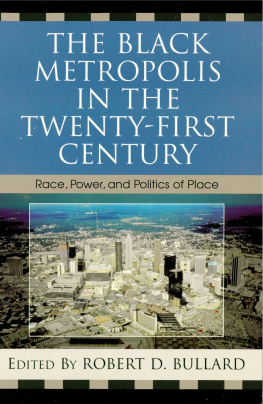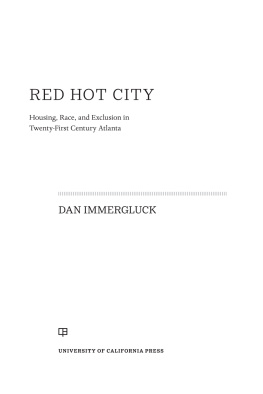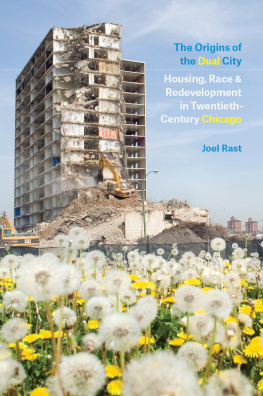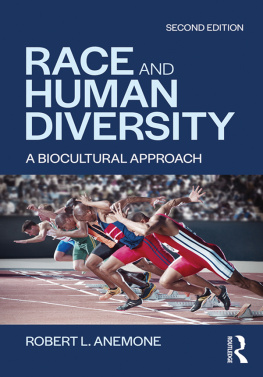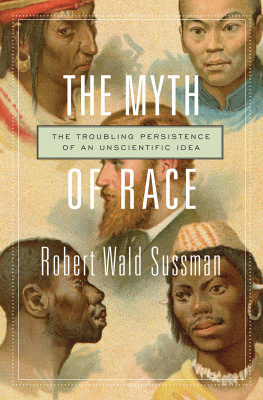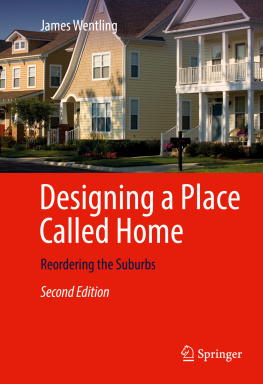The New Suburbanites
The New Suburbanites
Race & Housing in the Suburbs
Robert W. Lake
First published 1981 by Transaction Publishers
Published 2017 by Routledge
2 Park Square, Milton Park, Abingdon, Oxon OX14 4RN
711 Third Avenue, New York, NY 10017, USA
Routledge is an imprint of the Taylor & Francis Group, an informa business
Copyright 1981 by Rutgers, The State University of New Jersey
All rights reserved. No part of this book may be reprinted or reproduced or utilsied in any form or by any electronic, mechanical, or other means, now known or hereafter invented, including photocopying and recording, or in any information storage or retrieval system, without permission in writing from the publishers.
Notice:
Product or corporate names may be trademarks or registered trademarks, and are used only for identification and explanation without intent to infringe.
Library of Congress Catalog Number: 2012003942
Library of Congress Cataloging-in-Publication Data
Lake, Robert W., 1946
The new suburbanites : race and housing in the suburbs / Robert W. Lake. -- 1st pbk. ed.
p. cm.
Originally published: New Brunswick, N.J.: Center for Urban Policy Research, Rutgers University, c1981.
1. African Americans--Housing. 2. Discrimination in housing--United States. 3. Suburbanites--United States. I. Title.
HD7288.72.U5L35 2012
305.896'07301733--dc23
2012003942
ISBN 13: 978-1-4128-4858-9 (pbk)
Chapter 2 National Trends in Black Suburbanization
Chapter 3 Racial Transition and Black Homeownership
Chapter 4 Spatial Patterns of Suburban Black Growth
Chapter 5 The Case Study Setting: Five Communities
Chapter 6 The New Suburbanites: The Recent Buyers Survey
Chapter 7 Housing Search and Discrimination
Chapter 8 Housing Prices, Equity, and Race
The 1970s was the decade in which a large sector of America's black population reached middle-class economic status. Income statistics, the most commonly-used indicator of class attainment, reveal that by the end of the period 30 percent of black households were at or above the median income level for all American households.
But this status is tenuous. Income is merely one component of a household's economic resources, and to look at it in isolation is to fail to consider stored wealthcapital assets. With few exceptions, the current generation of black wage-earners is the first to have obtained jobs with some measure of security of tenure and salary. The principal gap between the black and white middle class may thus be the absence of multigenerational asset formation passed down through inheritance andparticularly in recent yearsgenerated and enhanced through successful home investment.
Homeownership has been the principal vehicle for capital accumulation for most white Americans, especially in the post World War II period. While conventional savings accounts and insurance have withered in recent years in the face of inflation, homeownershio has flourished as an investment.
Black homeownership grew from some 35 percent of all black households in 1960 to around 45 percent at the end of the 1970s. The results of this increase, however, viewed not from the perspective of shelter but rather from that of capital accumulation, give reason for pause. The bulk of black homeownership has been concentrated in central cities, areas in which capital gains have not been secured as readily as they had been for European immigrants of a previous era. The black move to the central cities has provided a limited inheritance. There is no substantial successor group to whom blacks can sell their realty holdings. There is no even-more-needy group to inherit the central city.
The very limitations of central city home investmentat least outside the extremely confined areas of true affluence-have contributed to an increasing thrust toward black suburbanization. Though inhibited by a broad array of segregational devices, both de jure and, more strikingly, de facto, this process is taking place at a rate exceeding that for central city whites. But will it be equally successful?
Within American society in the 1980s, successful homeownership is a principal key to the defense of middle class status for blacks. Success must be defined not merely in terms of the quality of life or shelter obtained but rather in terms of fiscal return, i.e., of not merely being able to buy a house, but to sell it as welland at a profit! This is a matter of concern not only to blacks as the directly impacted group but to all Americans.
The work presented here represents the culmination of more than fifteen years of work at the Center for Urban Policy Research to analyze the relationship between race and housing markets. In earlier efforts we looked at black owners of central city income properties, the inheritors of the slum tenements ( The Tenement Landlord, 1965), and the beginnings of black suburbanization ( The Zone of Emergence, 1971).
The study at hand is one of a series dedicated to analyzing the maturing of black suburban migration. The first volume ( Blacks in Suburbs, 1979) aimed at providing the broad baselines of national trends. A second monograph (Mortgage Lending and Race, 1980) pursued the issue of redlining-the availability of mortgage loans to blacks and the scale of financing limitations imposed on black homebuyers as a function of race. In a subsequent publication we shall look at black suburban renters and assess the potential for broadening black homeownership.
This volume has as its target the delineation and definition of black suburban homeownership. Of principal concern are the search for housing, the realities of acquisition, the resale process, and the prospects for equity accumulation.
There have been enormous strides in both the opportunities available and the income levels achieved by black Americans. Significant as they appear, however, these strides were not enough, despite demographic and societal pressures, to ensure black middle class status. How well has this been achieved in the suburban homeownership that is now taking place? What are the rules and what will be the needs of tomorrow?
The New Suburbanites begins to explore these questions.
George Sternlieb
Homeownership in the United States is a source of security, a sign of status, a means of equity accumulation, and a bond to the community. This book examines the access of black Americans to suburban homeownership.
Housing market access is a two-sided issue. First, how do blacks attain ownership? Is black home purchase geographically restricted to particular areas within suburbia? Are purchase options limited in terms of housing type and quality? Do blacks encounter barriers to housing information? Is housing search more difficult for blacks than for whites? Second, what is the market for blackowned suburban units? The potential for equity accumulation depends on the vitality of demand. What is the effect of white preferences for residential segregation on the resale value of black-owned units? How do the marketing practices of real estate brokers mediate the demand for suburban housing sold by blacks? These questions motivate the analysis reported in the following pages.





